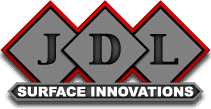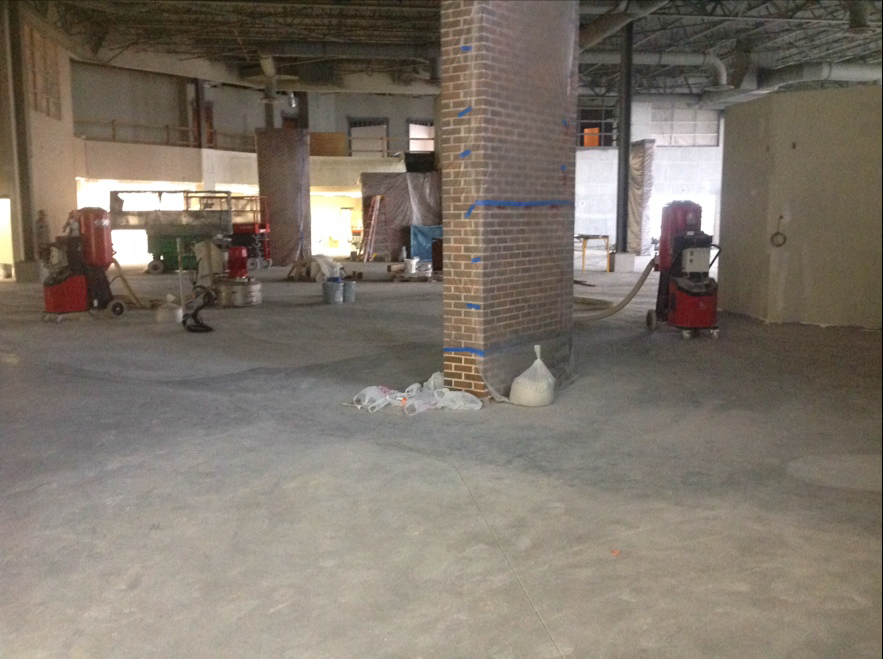At JDL Surface Innovations, we prepare large floors for epoxy coatings, overlays and polishing concrete. That means removing wood, tiles and other thinsets, mastic and glue that may be on the floor.
To do this type of work you need specialized machinery and trained personnel. Otherwise, it can be a nightmare and the integrity of the existing concrete can be damaged. We like to joke, but it’s true, concrete surface preparation is 80% of the job. An overview of the concrete floor preparation process before upgrading an existing concrete surface-
Fixing a concrete floor is pretty broad. There can be tons of variables and at the end of the day, each concrete slab is different and comes with it’s own set of hurdles. Some of those variables are moisture problems, the hardness of the concrete, pittings, chips and cracks, or even just the dull boring look of standard concrete. The good thing is that each problem has a solution and the experienced crew at JDL Surface Innovations can solve them all. In this article we provide a broad overview of what to expect when thinking about concrete surface preparation.
Here is what to expect: Concrete Floor Preparation
The first step is cleaning the floor
The floor needs to be cleaned and all existing material or structures need to be removed from the floor. Sweep, mop and get the floor ready to be examined without any obstructions. This is the first step and needs to be done no matter what. Dust, mold objects.. it all has to go.
Demo and Tile Removal
If there is existing tile or a coating on the floor, then it will have to be removed. Tiles can be removed with a floor scraper and many coatings can be removed with industrial grinding machines. The same process goes for glue, mastic and thinset removal.
Grinding the Concrete Surface
After cleaning the floor and removing any necessary tiles, glue or mastic from the floor, it’s time to start the concrete grinding process. The concrete grinding process involves an industrial grinder with diamond blades. We diamond grind the concrete to make it smooth and porous to accept a coating. This process of diamond grinding is essential and ensures that the concrete will bond and accept a coating that can be applied afterwards. The process of grinding the floor can happen once or up to 5 times depending on the type of floor that will ultimately be installed.
Crack repair
After diamond grinding the floor, it’s time to repair any cracks, divots, or imperfections in the floor. Before fixing any cracks, we always make sure that the entire surface is free of any dust and the cracks are clean. We then apply a cementitious material to fill the cracks. Once the crack filler dries out, it’s time to sand the cracks again so they are level with the rest of the floor. At this point, your floor is bare and ready to go to apply whatever coating material is needed to make the floor perfect and durable.
The Bottom line With Concrete Floor Preparation
There are so many more steps in the process than what we reviewed in this article. The truth is, concrete preparation and repair is 80% of the process. Without good concrete preparation, any coating applied to the concrete can fail. This preparation process needs to be done efficiently and effectively. At JDL Surface Innovations, we believe in doing things right the first time. That’s why our demo and concrete prep process is seamlessly planned out and executed in a timely manner so the entire floor resurfacing project is a success.
Read More Of Our Flooring Industry Guides
















